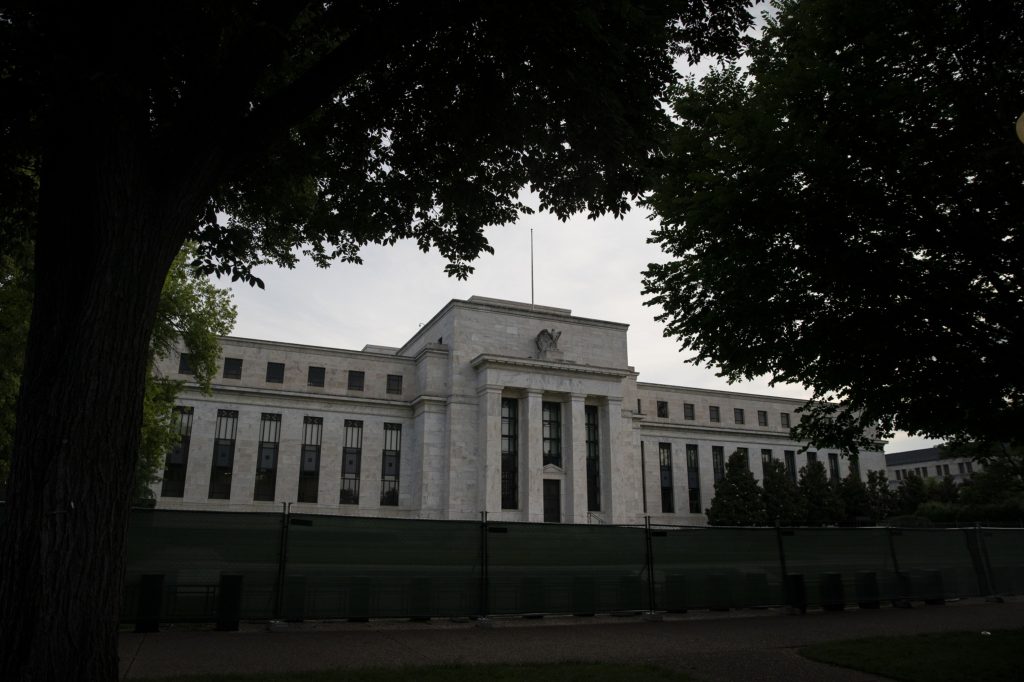Federal Reserve officials risk lacking an easy exit from their new path of unusually large interest rate increases, meaning they could end up over-tightening and pushing the US economy into recession.
The US central bank hiked its benchmark rate by three-quarters of a percentage point — triple the usual amount — for a third straight meeting Wednesday and surprised investors by signalling a fourth such increase at its meeting in November was likely.
Rapid tightening in response to persistent high inflation is getting the Fed to its intended final destination for rates much faster than anyone envisioned just a few months ago. And policy makers may have trouble down-shifting to a slower pace given the emphasis they’ve placed on near-term developments, even though it takes some time for policy moves to have an impact.
“For the Fed, the analogy is like: You are driving on a freeway, and if you don’t know where the exit ramp is, you go slower and in the right lane,” said Jonathan Millar, a senior US economist at Barclays Plc in New York. “They are in the left, faster lane, and could miss the off-ramp because they don’t see any signals.”

Quarterly forecasts published Wednesday by the Federal Open Market Committee showed officials now see the need to push the unemployment rate up to 4.4% by the end of next year — from 3.7% last month — to bring inflation down from four-decade highs. That implies about 1.2 million workers may lose their jobs as the cost of the Fed’s inflation fight.
To achieve that, policy makers projected their benchmark rate would need to rise by a further 1.25 percentage points this year, according to their median forecast. That puts an increase of another 75 basis points on the table at their Nov. 1-2 gathering, followed by a down-shift to a half-point hike in mid-December. They have already raised rates from near zero in March to the current target range of 3%-3.25%.
But Chair Jerome Powell told reporters Wednesday that certain boxes — including a slowdown in the labour market and “clear evidence” of moderating inflation — would have to be checked before the central bank starts slowing down.
Economists said that the aggressive rate hikes could cause the Fed to go too far.
“It is never a good idea to tighten in a frenzy and that is pretty much where we are,” said Simona Mocuta, the chief economist at State Street Global Advisors in Boston. “The time is around the corner when we should pause,” she said. “There is a disinflationary impulse building below the surface. It’s not like we are easy like we were a year ago.”
Even so, weekly data on initial filings for unemployment insurance published Thursday by the Labor Department suggested higher interest rates have yet to dent the labor market. At 213 000 in the week ended September 17, they remained near a four-month low.
And inflation has also remained stubbornly high, despite a lot of good reasons to expect a material downdraft in price pressures. Global supply-chain problems seem to be dissipating. Used vehicle prices are starting to log substantial declines, according to private-sector measures. Agricultural commodity prices have been sliding, too.
But so far, none of that is registering in the consumer price index — which was still 8.3% in the 12 months through August, near the highest levels since the early 1980s — and when it will is unclear. In the meantime, there’s only one more monthly CPI report due out before the November Fed meeting.
While the central bank’s projections suggest another three-quarter point hike at that meeting based on the median estimate, there will probably be a lively debate. Only 10 of 19 Fed officials thought at least another 1.25 percentage points of tightening this year would be appropriate, which means almost half of them are probably leaning more toward a half-point hike in November.
“Right now, the base case is for a fourth straight 75 basis-point increase, but there is an ongoing and fruitful discussion about a potentially smaller increase,” said Lindsey Piegza, the chief economist at Stifel Nicolaus & Co in Chicago. “Fed officials want to maintain a front of very strong resolve. There are also cracks in that united front.”
© 2022 Bloomberg
For all the latest Business News Click Here
For the latest news and updates, follow us on Google News.

